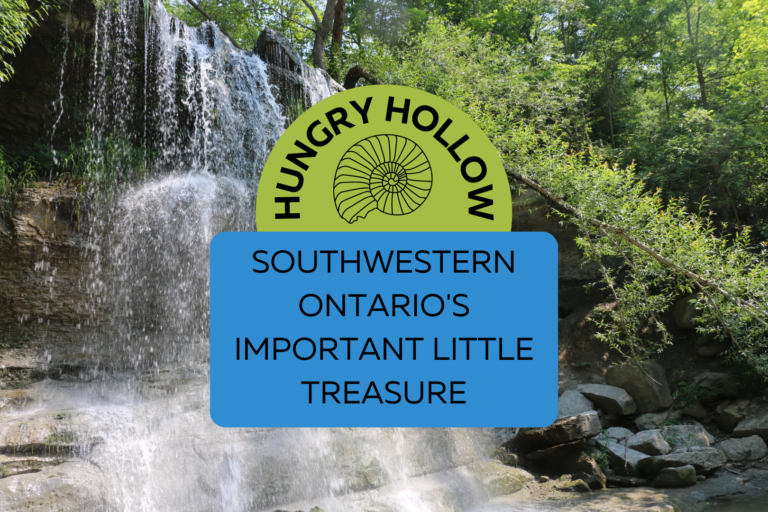It’s easy to pay little attention to the rocks beneath your feet in southwestern Ontario. Odds are, even at this very moment you’re probably standing on rocks deposited during the Quaternary Period. Even though this Period extends back roughly two million years, geologically speaking, rocks deposited during this time are still newborns. If you’re looking for fossils, you need to know where to look, as you won’t find them in the younger Quaternary rocks. You might find visible rock formations peppered along the side of country roads; however, those tend to be either sporadic, relatively small, or somewhat inaccessible at times. This is why Hungry Hollow is so special.

Despite its funny name, Hungry Hollow is a spot for serious fossil collectors. Located in Arkona, Ontario, it consists of two quarries that supplied aggregate material (e.g., sand, gravel, and crushed stone) for the production of drainage tiles. These pits have been out of production for quite a long time; now their beautifully exposed quarry walls allow us a rare glimpse into what life was like here during the Devonian Period, roughly 390 to 370 million years ago.
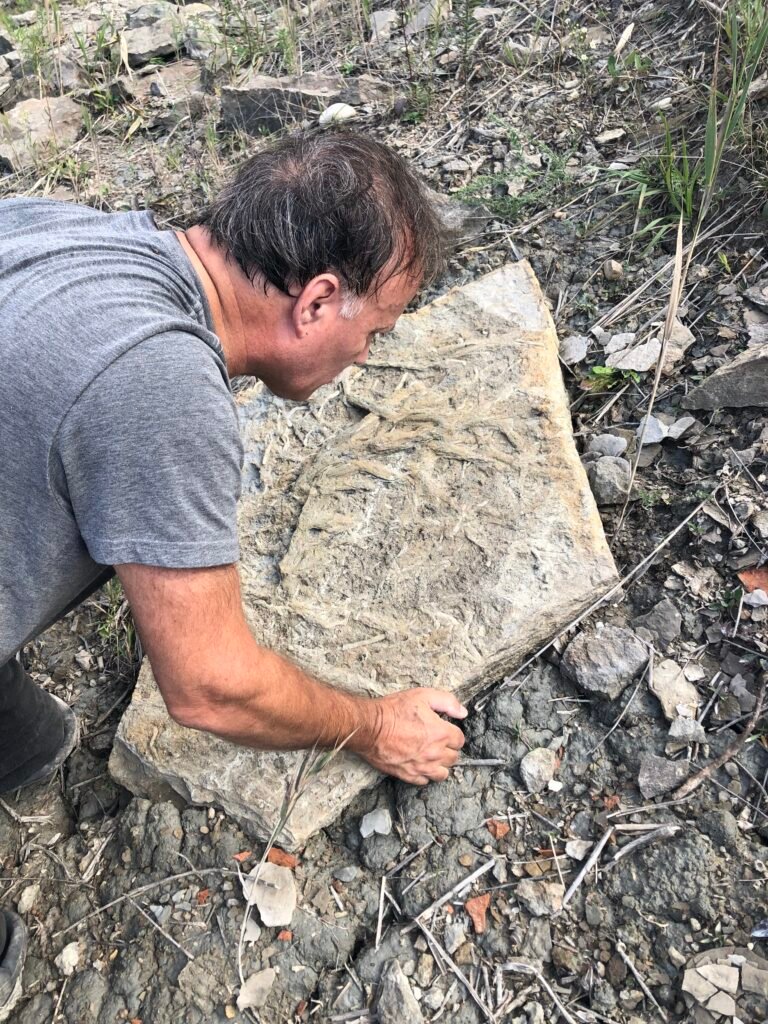
From Charles Southworth in the early 1900s to tech-savvy university researchers and amateur collectors in the 21st century, extensive studies of these quarries have painted a detailed picture of this ancient (paleo) environment. During this time in the Devonian, the Arkona area was a relatively shallow inland sea located just south of the equator (close to where Brazil is now). By comparing this to present-day locations just south of the equator, we can infer that this climate was warm with perhaps little variation in temperature, and likely punctuated by tropical storms from time to time.
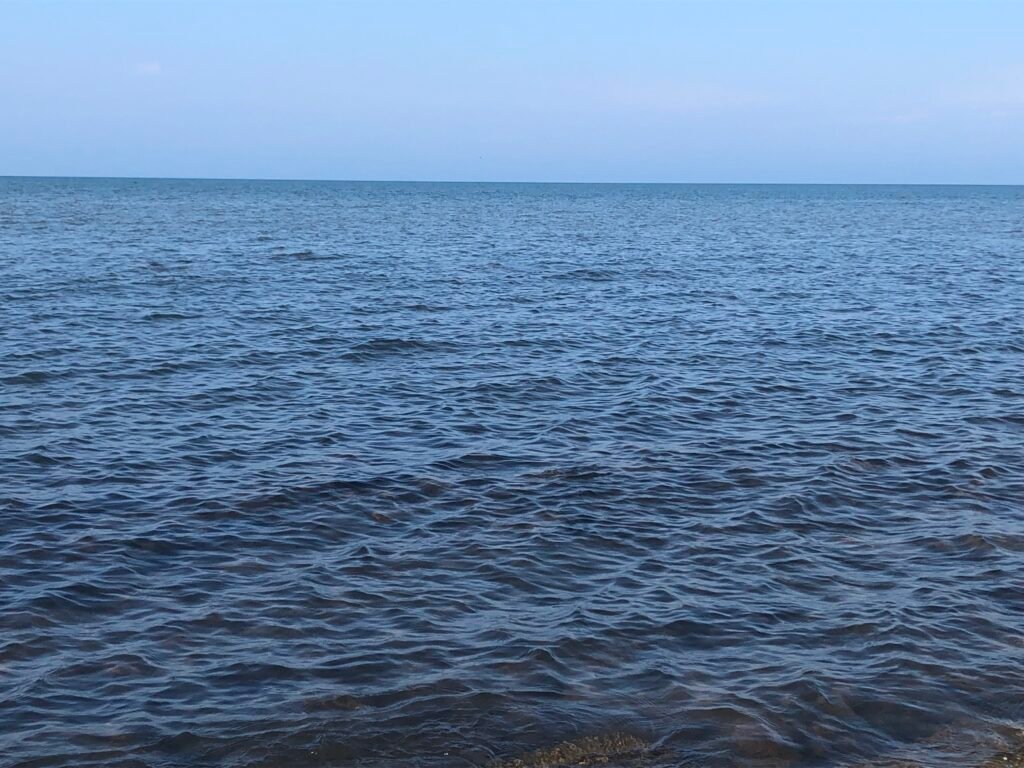
More than a century of digging in the old quarry walls has led to the discovery of a long list of fossilized organisms. Many of these fossils are named after pioneer fossil collectors in the area such as Southworth and Jean Davies Wright. One common and fascinating fossil found here is a brachiopod called Mucrospirifer arkonensis. Although they look superficially like clams, brachiopods have a very different evolutionary path from their two-valved distant cousins and belong to a completely different phylum (a principal taxonomic animal category). Mucrospirifer arkonensis looks kind of like someone took a brachiopod and pulled on both ends until it became stretched out. Paleontologists have speculated that these long “wings” may have evolved in response to a muddy substrate living environment; they may have allowed the organism to lay on the seafloor without sinking to their deaths.

Mucrospirifer arkonensis fossil with it’s wings broken off 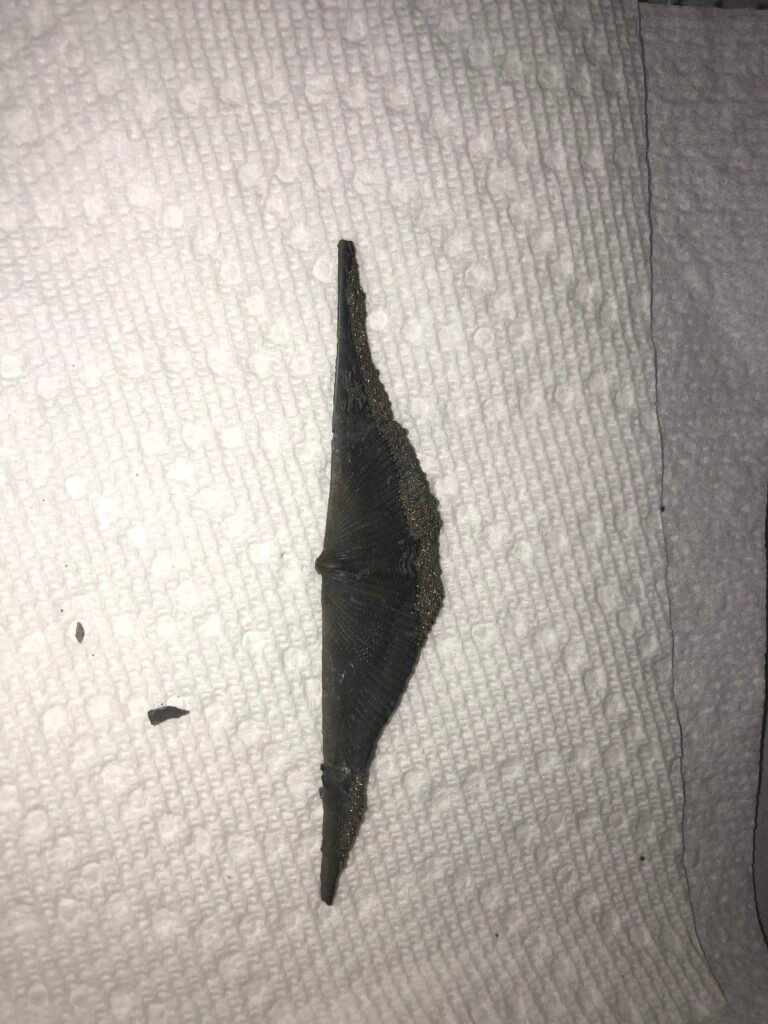
Mucrospirifer arkonensis fossil
If you’re lucky you may find something that looks like a little button while digging at Hungry Hollow. These cute little fossils are called Microcyclus and were actually a type of small solitary coral called rugose corals, that likely lived on muddy seafloors. There is much to learn about these corals, but it has been speculated that they had the ability to move from one location to another when necessary! The ultimate fossil find, however, is arguably the elusive trilobite. If you do find one, it is likely to be either the spiky Greenops or the less ostentatious Eldredgeops; finding either one can be considered a prize, and likely the envy of fellow diggers!
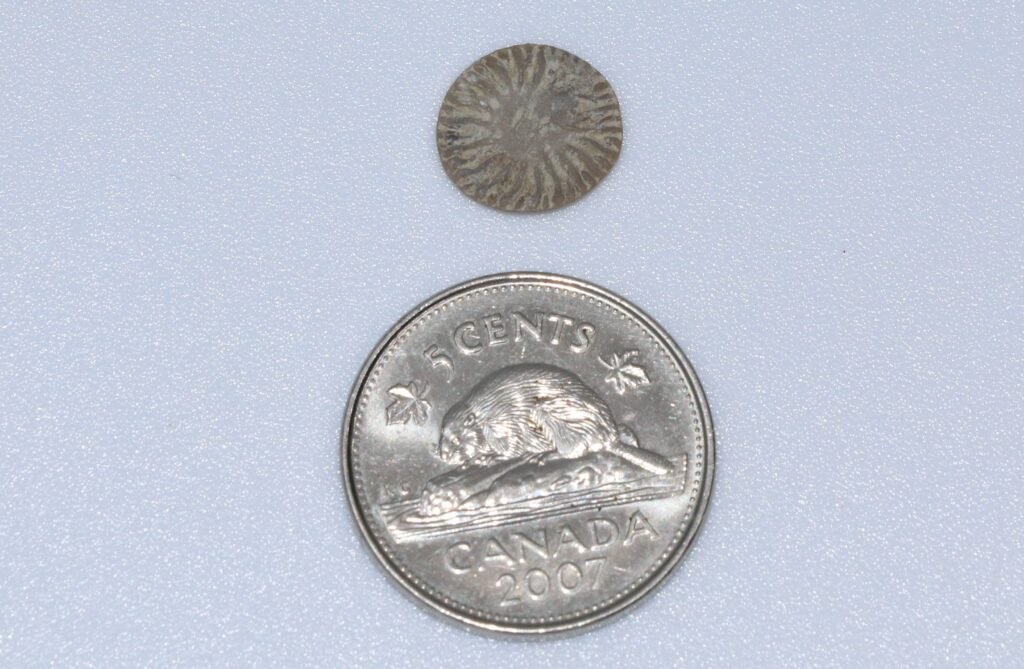
Microcyclus fossil 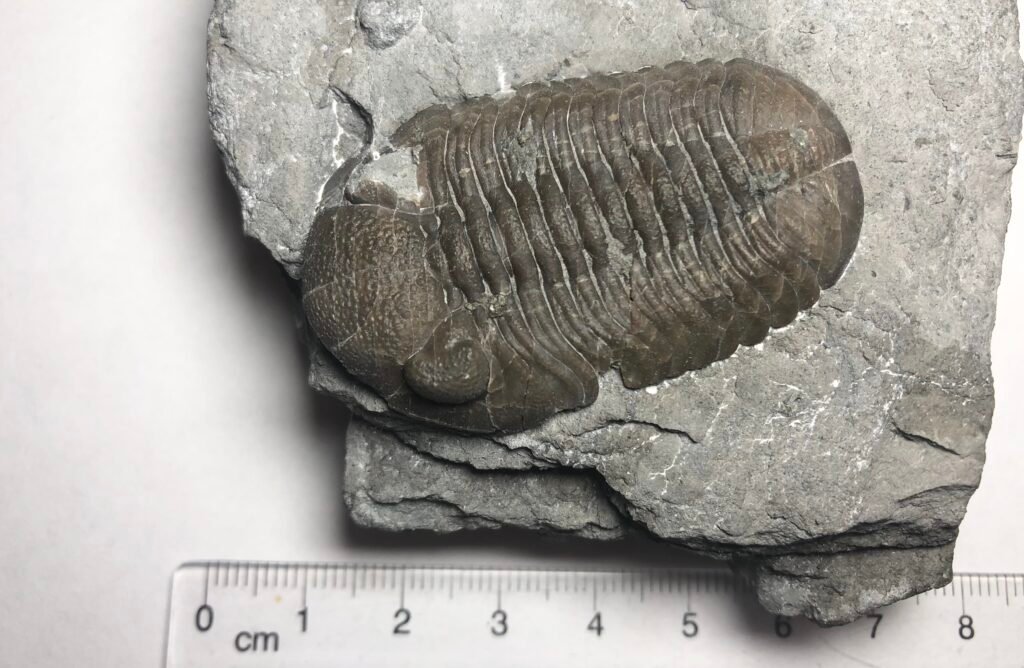
Eldredgeops trilobite fossil
In addition to the pits at Hungry Hollow, beautiful Devonian geology is exposed at nearby Rock Glen. This conservation area allows visitors to keep one fossil per person per visit. Visitors can enjoy the beautiful waterfall and walk downstream to view more spectacular geology. Tucked away just north of the river is the Arkona Lion’s Club Museum and Information Centre. Make sure to pop in to see their collection of local Indigenous artifacts, fossils, and even their brand-new interactive microscope (funded by the APGO Education Foundation) that allows you to see very small fossils you may otherwise miss!
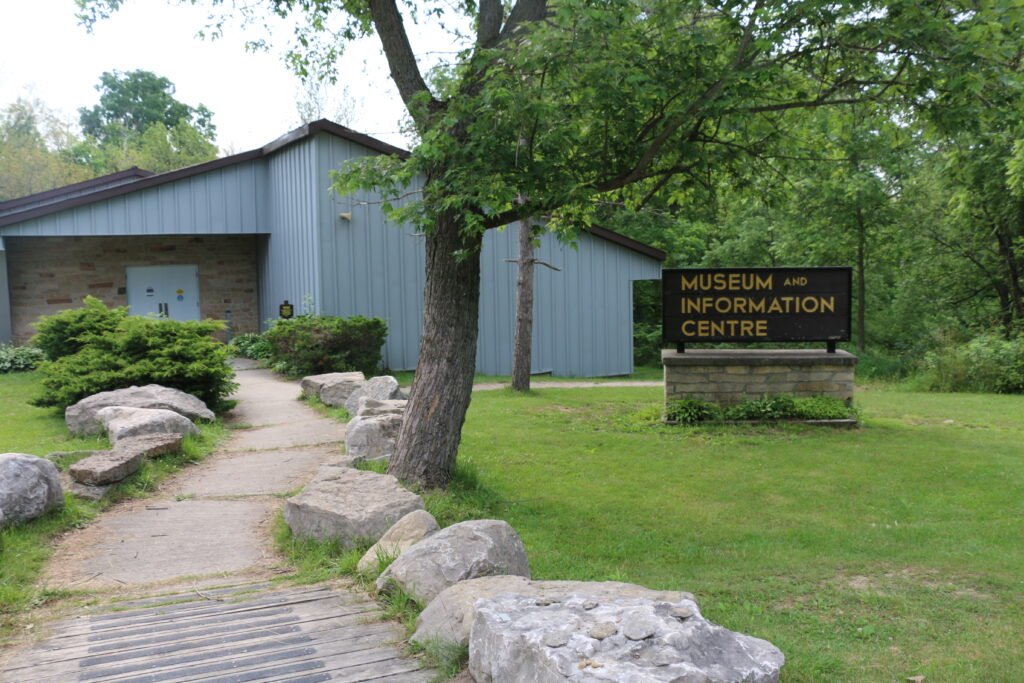
Although the often-fossiliferous Devonian rock layers are present in Ontario everywhere west of Woodstock, they are usually inaccessible as a result of overlying Quaternary sediments, ground cover, and infrastructure. We rely on others digging into the ground to expose these ancient rock layers, as is the case at Hungry Hollow. If you are interested in visiting Hungry Hollow to do a little fossil collecting of your own, please contact the London Gem, Mineral and Fossil Society. The pits at Hungry Hollow are located on private property and any visits not sanctioned through the London Gem, Mineral and Fossil Society are considered trespassing and therefore illegal. Luckily membership to the Society is relatively inexpensive and they hold field trips to the area multiple times each summer.
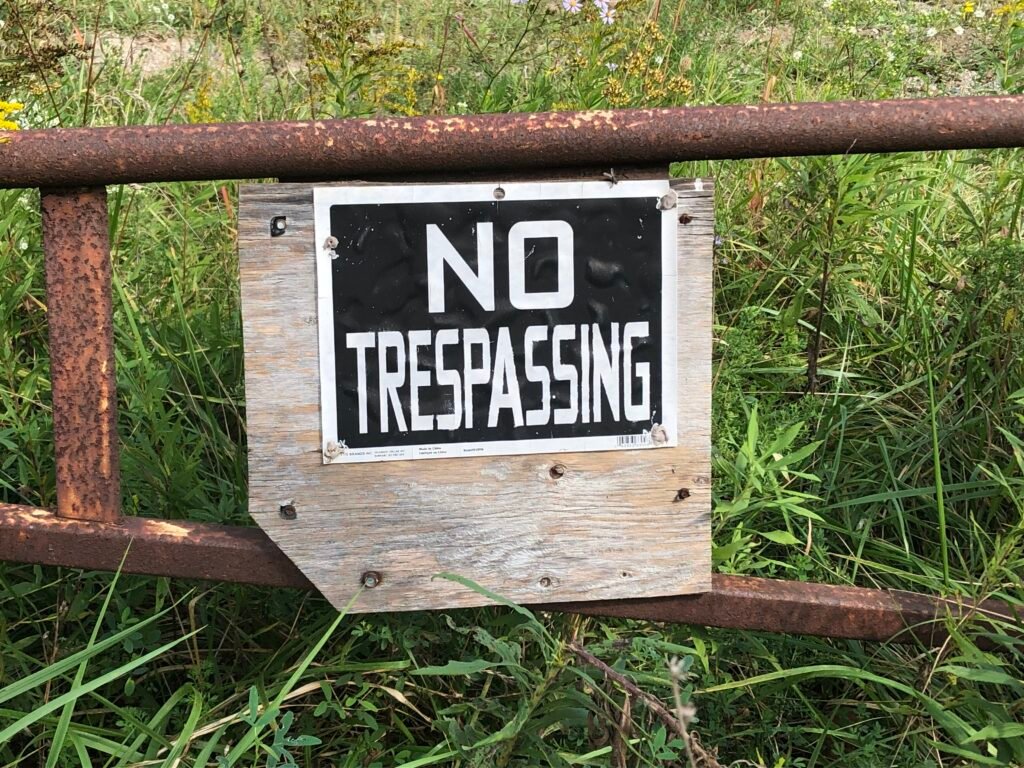
To learn more about the Arkona area, be sure to visit The Arkona and Area Virtual Field Trip. Through still photos, 360-degree photos, and videos, this virtual tour provides an in-depth history of the geology of southwestern Ontario, a detailed description of the paleoenvironment in which these Devonian organisms lived, and a fully illustrated index of fossils that can be found in the area. As a bonus, virtual tours of the Oil Museum of Canada (located on the grounds of one of North America’s first oil fields, in Oil Springs, Ontario) and the Oil, Gas, & Salt Resources Library are included in this virtual field trip.

Deana Schwarz, P.Geo., is the Manager of Public Education Programs at GeoscienceINFO.com. She has Bachelor degrees in Geology and Biology, an M.Sc. in Geology, and a Ph.D. in Geology from the University of Western Ontario.

